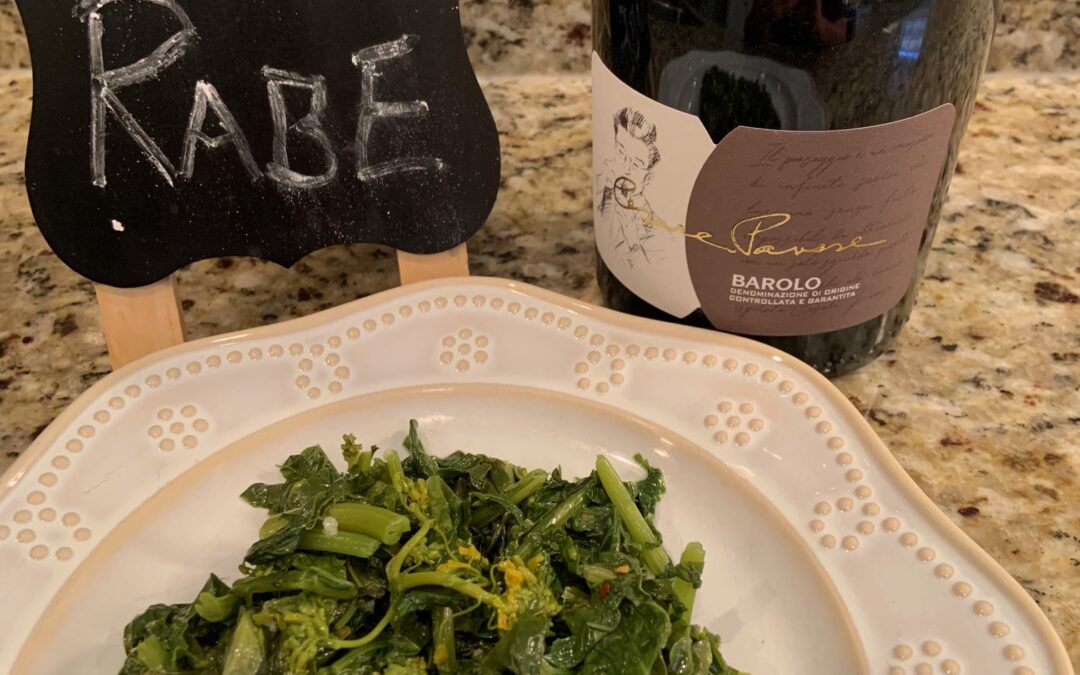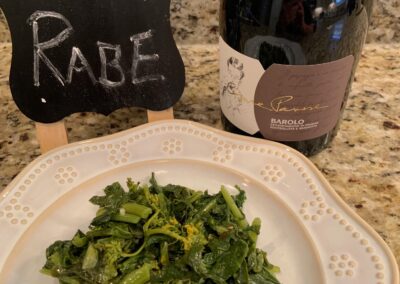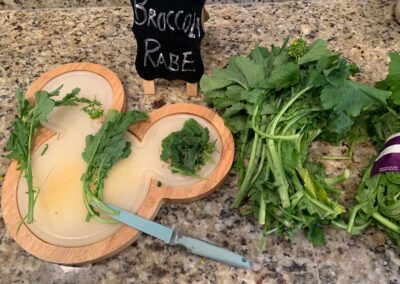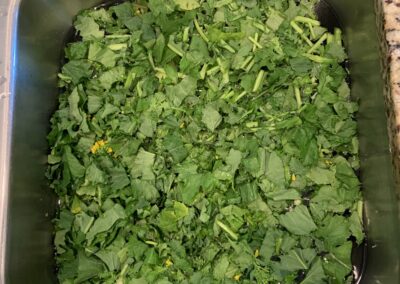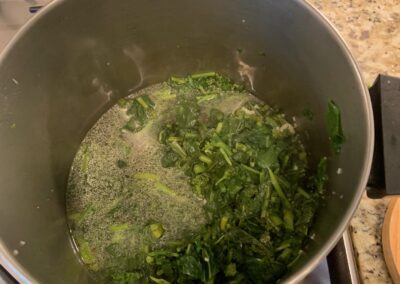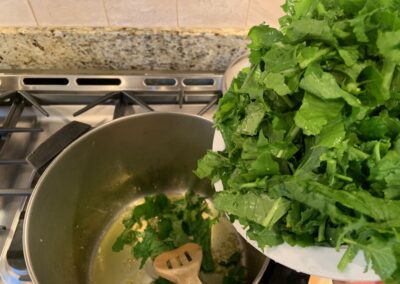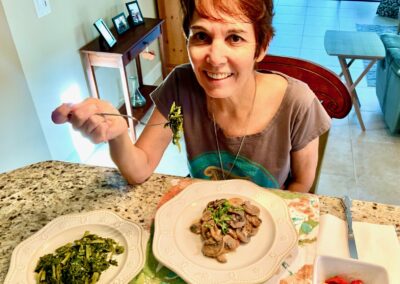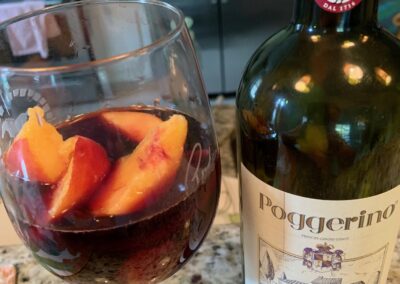Maybe it was too Old World for the modern restaurant scene. Or, maybe the strong flavors were a bit too much out of the mainstream.
Through the years, broccoli rabe has crept onto many menus, even in non-Italian restaurants. I recently ate at a wonderful restaurant in the clubhouse of one of the famous Cliffs golf courses in the mountains northwest of Greenville, South Carolina. There was nothing Italian about the menu. I had Grilled North Atlantic Salmon with Roasted Fingerling Potatoes and Broccoli Rabe.
The meal was outstanding … except for the broccoli rabe. Like most modern restaurants, they have no idea how to cook this Old World traditional Italian vegetable.
First, broccoli rabe — or its real name, rappini — is not really broccoli. It is a leafy vegetable in the turnip family. So, not only is it mistreated by name, it is mistreated in many kitchens.
Most restaurants and most recipes you will find online follow the quick, 15 minute method of taking the entire stalk, blanching it for a couple of minutes and then sauteing it. This will produce a tough, tasteless version of what should be a pungent addition to a meal or sandwich.
Also known as “bitter broccoli”, there are some recipes that talk at length about blanching the vegetable in order to minimize the bitterness. That is like taking a full-bodied, rich glass of red wine and adding water in order to minimize the hearty flavor.
“Bland” is not a word in the Italian cooking dictionary.
The key to making PROPER Broccoli Rabe can be found in the Three C’s … Cutting, Cleaning and Cooking.
Both my grandmother and mother used this method, never varying over the years. As a result, broccoli rabe became a staple in our household. My grandmother made it regularly. My mother took it to a new level, almost always having a bowl of broccoli rabe in the refrigerator — cooked perfectly and standing at the ready.
Despite the abundance of broccoli rabe in the house, it was sometimes difficult to get my share … because my sister, Tina, and my wife, Candy, would eat it for breakfast, lunch and dinner, if they could. In fact, they usually sat next to each other at the dinner table and the bowl of broccoli rabe rarely reached the other end of the table.
The process is a bit tedious, but worth it.
In Photo 2 you will see the entire bunch, as it comes from the market, at the far right. On the cutting board, from left to right, is an entire stalk, as it is incorrectly sauteed whole in most restaurants. In the middle is a stalk that is being trimmed and peeled to remove the tough bottom of the stalk. At far right on the cutting board is a stalk that has been cut properly into small pieces after it is trimmed.
The purpose of cutting into small pieces is twofold. It helps to produce a more tender version, after slow cooking, and it makes it easier to eat, especially on a roast pork or chicken cutlet sandwich.
The cleaning process is not hard. Fill the sink with water and place all of the trimmed and cut rappini in it. Submerge and swish the leaves until any small particles of grit are washed out.
Now we are ready to Cook.
Heat some extra virgin olive oil in a large pot. Sautee a generous amount of crushed garlic. Then add the rappini directly from the sink, without drying it. Fill the pot then close the lid tightly. This will produce a combination of steaming and sauteing the vegetable.
Lower the heat, add salt and pepper, and stir the contents often. Add lemon and crushed red pepper flakes, if desired. Cooking is a slow process, at very low heat. It could take as much as two hours to produce the desired juicy, tender product.
Old School Italians often drink the leftover juice at the bottom of the pot after the cooked rappini is removed.
As mentioned, broccoli rabe is often a great addition to a roast pork sandwich … or a chicken cutlet sandwich with a big slice of imported sharp provolone cheese.
But my favorite recipe comes from an incredibly popular family-run restaurant — Combine Brothers — in Hermitage, PA, just across the border from Youngstown, Ohio.
Known for huge portions, their signature dish was a large “macaroni bowl” filled Ziti pasta and broccoli rabe, cooked in garlic and oil. Then their grilled homemade Italian sausage was removed from the skin and crumbled over the top of the entire dish.
I first had it 25 years ago, long before you saw broccoli rabe on the menu at other restaurants. Over the years, I brought a number of golfers to the restaurant for a post-round feast. Rave reviews.
They knew how to cook broccoli rabe correctly. So did my grandmother and mother. And, now, so do you.
Most restaurants offer the “Medigan” version. (If you don’t know what that means, ask an Italian.) But don’t bother ordering it. It’s nothing like the real thing.
For last night’s dinner, I paired the Broccoli Rabe with Chicken Marsala and a Tomato, Basil, Mozzarella Salad.
The 2017 Poggerino Chianti Classico Riserva was a perfect partner to the meal. And, as my grandfather always did, the last half-glass of wine was reserved as a marinade for a sliced peach. Dessert, Italian Style.
Buon Appetito.

